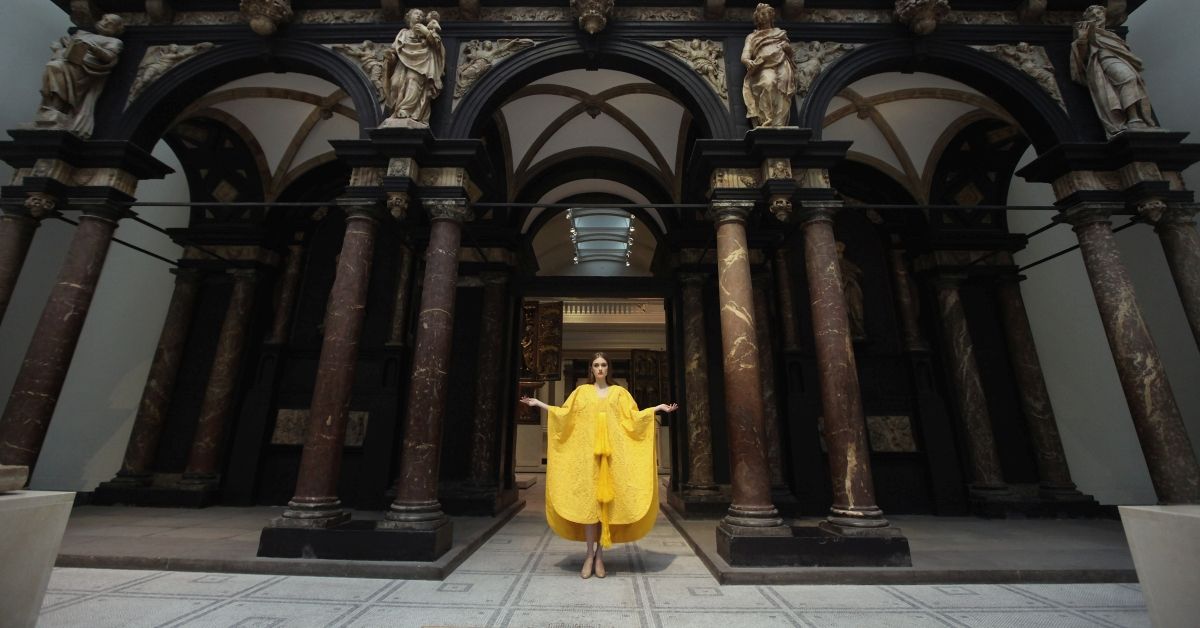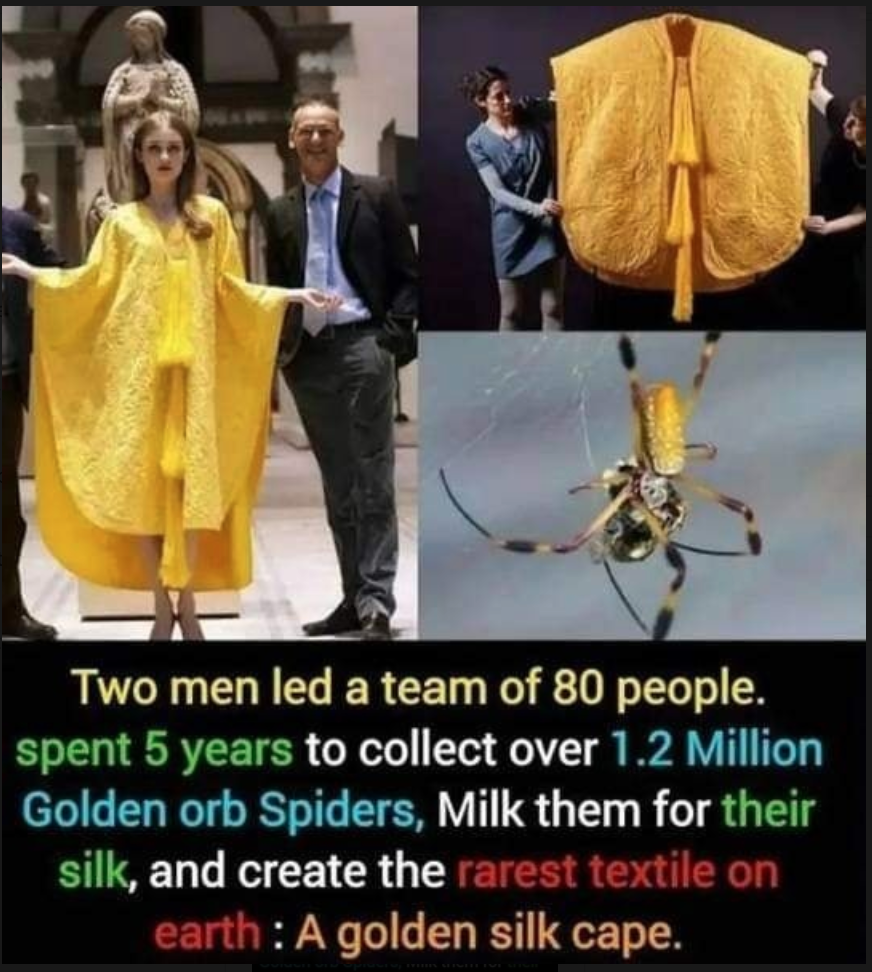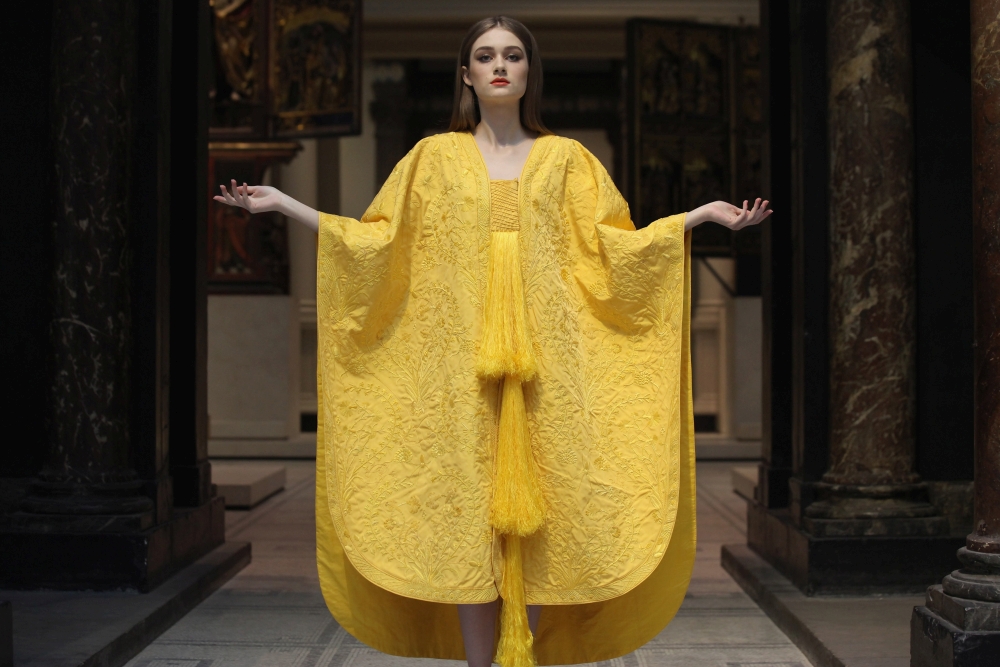While the spider-silk cape really exists and gist of the meme is true, several of its details are incorrect. We go through the meme claim-by-claim below.
Fact Check
Tales of creation stemming from the spinnerets of spiders span continents and cultures. From Navajo folklore to Greek mythology, depictions of spiders have been recorded throughout centuries and in 2009, folklore came to life after two designers spun a cape made entirely of the golden-hued silk from Madagascar orb weavers.
As if something out of a fairy tale, Snopes readers sent our editorial team a meme that claimed to depict a golden-hued cape spun from the silk of orb weaver spiders:
It’s true that such a cape exists. Created in 2009, the 11-by-4-foot garment first went on display at the American Museum of Natural History, and was later held on exhibit at the Victoria and Albert (V&A) museum, a London-based art and design museum, from January to June 2012. Inspired by royal garb, the “labor of love” was the brainchild of Simon Peers and Nicholas Godley, who called it the “invisibility cloak” because of its light weight. The creation of the cape was captured in a video created by the museum. In a video describing the cape, its creators said that it takes a certain kind of “madness” to undergo such an endeavor.
We determined that the overall claim is true, but there are a few small nuances in the meme that are inaccurate. We’ve outlined those below.
❌ The team was made up of 80 people. In an interview, the creators noted that it took between 60 and 80 people every day to collect the wild spiders and harvest their silk, but not necessarily over the course of the entire project. That number is likely much higher because the process was “very hands on” and required silk collectors, transformers, weavers, and embroiderers.
❌ The cape took five years to complete. The creators said that the creation took about three years, while some reported four years.
✅ The cape required the silk from over 1.2 million gold orb spiders. Female gold orb weavers were individually collected in the highlands of Madagascar, kept alive, and milked to produce nearly 100 feet of thread each over about five minutes before being released back in the wild.
Inspiration for the cape was found in the story of the French missionary Jacob Paul Camboué, who worked with spiders in Madagascar in the late 19th-century. Camboué built a small hand-driven machine to harmlessly extract silk from two dozen spiders simultaneously. This design was replicated by the cape’s creators, reported Wired.
✅ The spiders were milked for their silk. Silk thread used for the cape was made by hand from spinnerets of golden orb weaver spiders. Australian Museum described the spiders as large with silvery-grey to plum colored bodies with brown or black legs that often have yellow bands. Silk is extracted by touching the spinnerets on the spider’s abdomen. Silk sticks to a person’s finger and is then pulled, after which point strands are wound onto wooden cones and “thrown” by twisting and doubling the strands to create threads. Spider silk is soft, light, and incredibly strong.
✅/❌ The textile is the rarest on Earth. While the golden silk thread has been called rare, it may not be the rarest. V&A noted that the cape is made of the “world’s largest pieces of cloth to be made from spider silk” and while spider silk is exceedingly rare, some argue that silk spun from lotus is even more so — it can take up to two months to extract enough lotus silk to make just one scarf, reported Business Insider. Other rare fabrics include cashmere, and vicuna, a fabric made from a llama-like animal in Peru. By comparison, one yard of vicuna fabric fetches nearly $4,000 on the website Alpaca Collections).
The creation of the cape and a history of silk can be read in the V&A book, Silk: Fibre, Fabric and Fashion.



